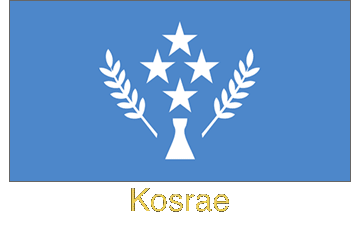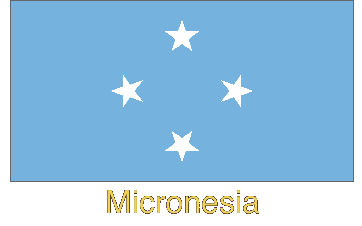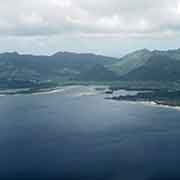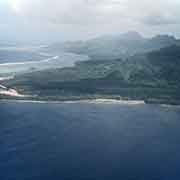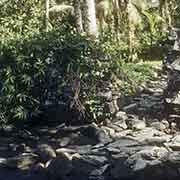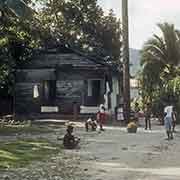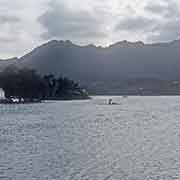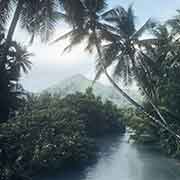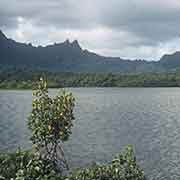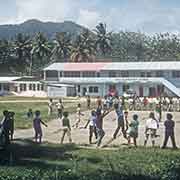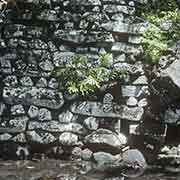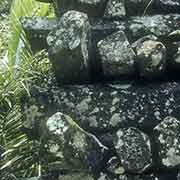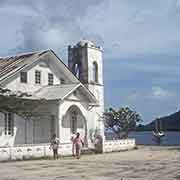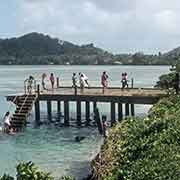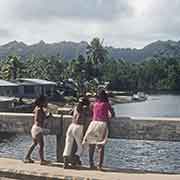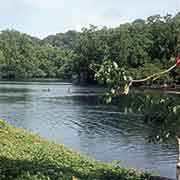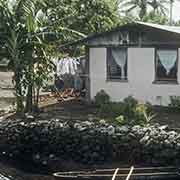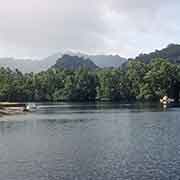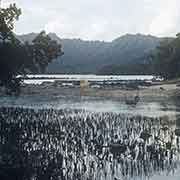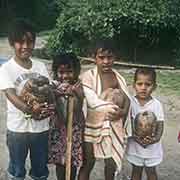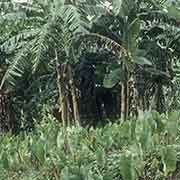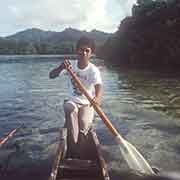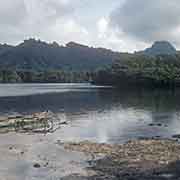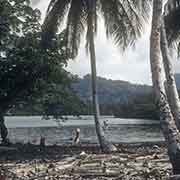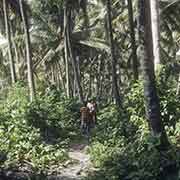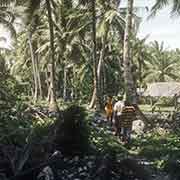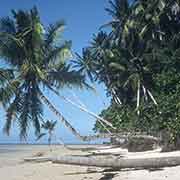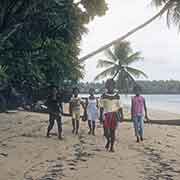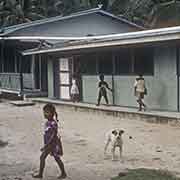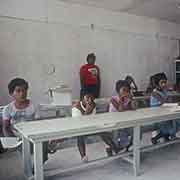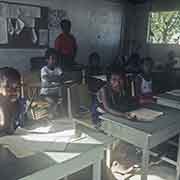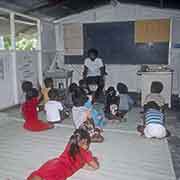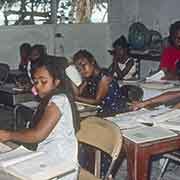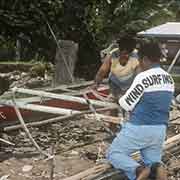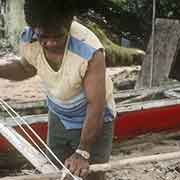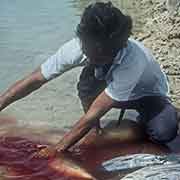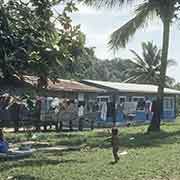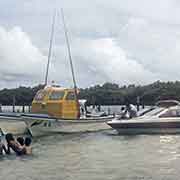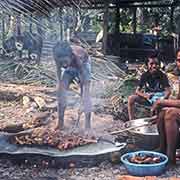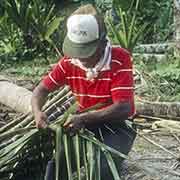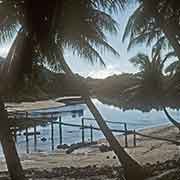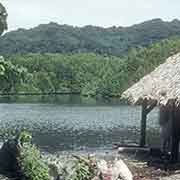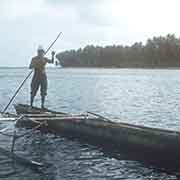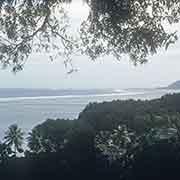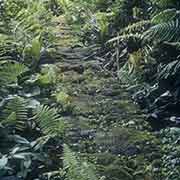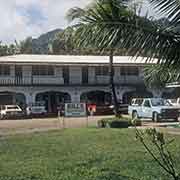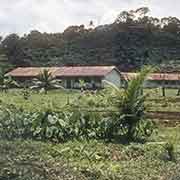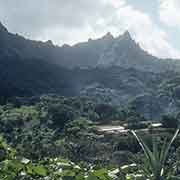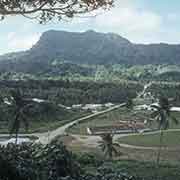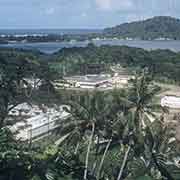Photos of Kosrae, Micronesia
Kosrae island
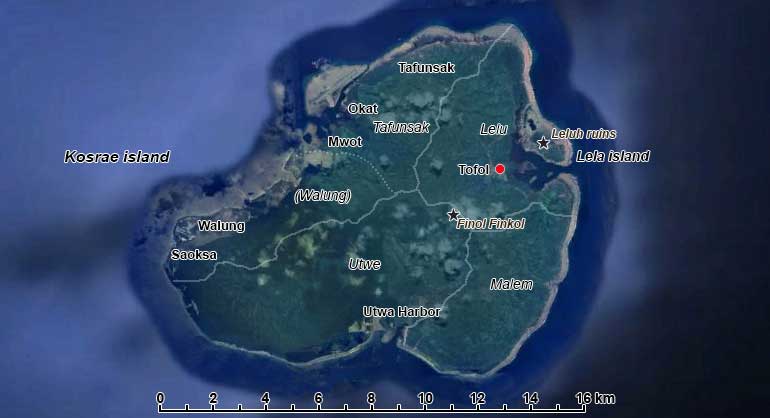
Kosrae is the easternmost of the Caroline Islands in the Federated States of Micronesia and its smallest State. It has a land area of 111.3 km² and a population of around 6,600. It was formerly known as Kusaie or Strong’s Island, and there are a few nearby islands and islets, including the inhabited Lelu Island, where also the ancient Leluh ruins are situated. Opposite that small island is the State’s capital, Tofol, in Lelu municipality; the island is now subdivided into four municipalities: Lelu, Tafunsak (including Walung), Utwe and Malem. The official language is Kosraean, but English, the official language of the FSM, is widely used.
you may then send it as a postcard if you wish.
The island has been settled at least from the start of the first millennium CE. The city of Leluh already existed around 1250 CE. It developed a civilisation that reached its pinnacle around the 14th and 15th centuries. It was a stone city, built from coral and basalt blocks, and it is believed that the rulers in Leluh governed the whole island. The king and aristocracy lived behind high basalt walls - similar to what can also be seen in Nan Madol on Pohnpei; it may well be that these two influenced each other. The ruins can still be seen, but in the wake of European contact material from the ancient city were used in modern constructions. The first European travellers arrived in 1824, finding a highly stratified feudal society and a population estimated at around 6,000. In 1835 crews of two ships, trying to “take liberties with local women” had been killed by outraged men who also burnt and sank their ships. Congregationalist missionaries arrived in 1852, and by 1870 the whole island had converted to Christianity. By that time population had dropped to only 200, a result of conflicts and diseases brought by the newcomers.
In 1885 the Spanish Navy took control of the island, but after Spain’s defeat in the Spanish-American War of 1898, it sold the Caroline Islands to Germany. After the First World War, it came under Japanese administration. During the time of the Japanese South Seas Mandate from 1919 until the end of the Second World War, Kosrae was run by the resident missionaries. It was reported in the thirties that there was no crime, no alcohol and no tobacco! Although the Japanese fortified the island during the war, no battles took place. In 1945 the Americans took over and the island, then called Kusaie, was administered as one of the municipalities of Ponape (Pohnpei), during the time it was part of the Trust Territory of the Pacific Islands. In 1977 it became a separate district, and in 1979 it ratified, with Pohnpei, Chuuk and Yap, the Constitution of the Federated States of Micronesia. Kosrae is an attractive, unspoiled island with a friendly population, who still practice traditional farming and fishing. It has excellent possibilities for hiking and diving - the coral reefs around it are superb.
